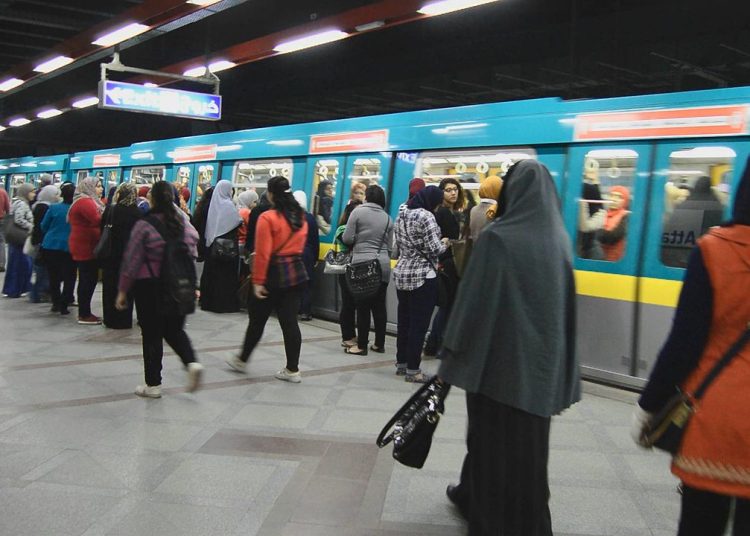The final section of the third green line of the Greater Cairo Metro, known as 3C, did a dry run with passengers on Wednesday, marking the completion of this eco-friendly track.
Spanning 7.1 kilometres, the 3C offers commuters a seamless journey across Cairo and Giza, linking key destinations, such as Giza’s Mohandessin with Cairo University.
With a total length of 41.2 kilometres and 34 stations, Line 3 functions as a crucial link between the eastern and western parts of Greater Cairo, integrating with various transport modes, including the Monorail, Light Rail Transit (LRT), Third Metro Line, Superjet Station, and Bus Rapid Transit (BRT).
The latest development aligns with Egypt’s commitment to implementing sustainable mass transit systems.
Overseen by French transportation firm RTP Dev and funded by the European Union, Cairo Metro’s third line underscores Egypt’s efforts toward a greener transportation network.
The LRT came into service in 2023, linking Cairo with the New Administrative Capital. The monorail’s East Nile line’s first phase is expected to supplement the LRT to link the new capital with Greater Cairo.
The monorail was initially set to open in 2023, but following delays in constructing the first line, the East Nile branch is scheduled for trial operation by October this year.
The two-line monorail network will extend for almost 100km and be served by 35 stations. The monorail has cost $4.5 billion to implement, according to Arab Contractors, one of three companies implementing the project, alongside Bombardier Transportation and Orascom Construction.
The two lines will have a maximum capacity of 45,000 passengers per hour in each direction.
The government has executed a comprehensive plan to develop the first and second metro lines at a cost of roughly 38 billion Egyptian pounds to improve services.
The plan included developing metro line trains and infrastructure. When it opened in 1988, the first line of the underground metro was dubbed the ‘fifth pyramid’ for its being a breakthrough in transport engineering.
The government has signed a raft of deals with global corporations to purchase new rolling stock that were installed on the first and second lines, in addition to revamping the existing trains.
The state has devised a comprehensive plan for Greater Cairo to have six metro lines by 2030, within the framework of Egypt’s Sustainable Development Strategy.
Around 4 million Cairenes use the metro every day. Since its launch, the metro has become the most important means of transport in Cairo.
Line 1 is the oldest line of the Cairo Metro with its first 29-kilometre segment having opened in 1988. The line, which stretches from Helwan to Ramses Square, is 44.3-kilometre long and serves 35 stations.
Line 2 is 21.6kilometre and it serves 20 stations, of which 12 are underground. Line 2 uses the third rail electrification system instead of the overhead line used in the first line.
According to the National Authority for Tunnels, work is in full swing on the third, fourth and sixth lines of the metro.
Line 3 is part of the Greater Cairo Metro project that passes from Embaba to El-Mohandiseen, crossing under the Nile up to Zamalek district and Attaba.
The fourth metro line is also in the making. In January of this year, President Abdel Fattah El Sisi approved a 100 billion Japanese yen (nearly $676 million) loan provided by the Japan International Co-operation Agency to be used in implementing the first phase of Line 4 of the Greater Cairo Metro.
Line 4 comprises 39 stations and will be implemented in two phases, according to the National Authority for Tunnels.
The expansion of the metro network in Cairo required adherence to environmental and social safeguards, which incorporated inclusive stakeholder engagement.
The expansion also created training and employment opportunities for young people.






Discussion about this post